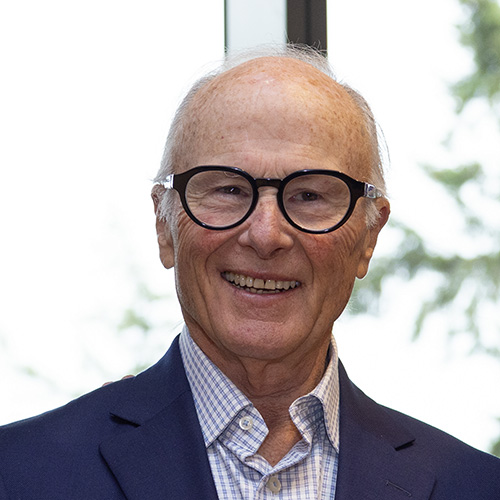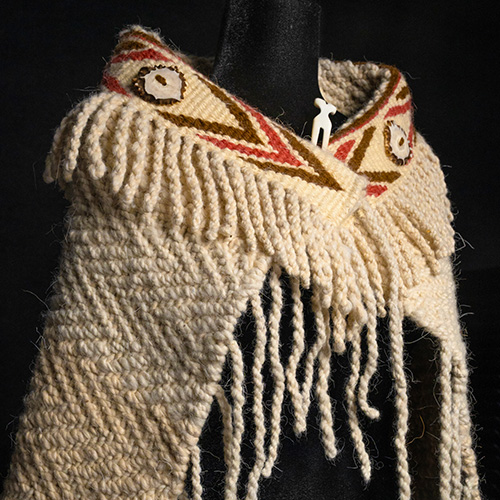
Remember casting a vote for class president in grade school? The process was straightforward: the classmate with the most votes won.
Few voting scenarios are that simple, as UW students are learning in a new interdisciplinary course about voting, STAT 498/CSSS 594: The Statistics and Philosophy of Voting. The course takes a deep dive into the complexities of voting, from majority rule to election forecasting to gerrymandering to voting rights.
“Voting can be quite complex if you look at it from the standpoint of decision-making,” says Elena Erosheva, professor of statistics and social work and associate director of the Center for Statistics and the Social Sciences. “Who gets to vote? How do we count those votes? What mathematical algorithm is used to decide the outcome? And when an election is very close, what do you do then?”
Political Questions, Mathematical Models
Erosheva was inspired to create the course after learning about an analogous class at Carnegie Mellon University. She proposed the course in June and invited two colleagues — Marina Meila, professor of statistics, and Conor Mayo-Wilson, associate professor of philosophy — to join her in developing the class over the summer.
“I’m interested in how mathematics describes or connects to the world, and I’ve recently become interested in a specific aspect of voting — redistricting and gerrymandering,” says Meila. “So when Elena contacted me about this, I thought it was a fantastic idea. I was ready to go.”

Mayo-Wilson was excited as well, welcoming the opportunity to collaborate and bring a philosopher’s lens to statistical questions. “I teach large symbolic logic classes that have a good number of STEM students,” he says. “A lot of them don’t get to think about the relationship between the mathematical models that they’ve studied and certain fundamental ethical or political questions. That was one of my motivations for participating.”
The team is currently co-teaching the class, with occasional guest lectures from faculty in the Departments of Philosophy, Political Science, and the Information School. The US presidential election will serve as a backdrop throughout the quarter, though the course will also consider voting procedures in other countries and other situations, such as hiring or grant-funding decisions – or less consequentially, the annual Frito-Lay contest in which customers vote on their favorite potato chip flavor (an example Mayo-Wilson uses when discussing mathematical models).
The 32 students in the course represent nearly a dozen UW departments, from psychology to computer engineering to economics. About one third are graduate students; the rest are undergraduates. All have a background in statistical analysis thanks to specific course prerequisites.
Social Choice and the Impossible
The course begins with introductory lectures on the purpose and limits of democratic decision-making (presented by Philosophy Professor Michael Blake) and US election administration (presented by Political Science Professor Jake Grumbach). Then Mayo-Wilson introduces social choice theory and its important implications for voting.
Social choice theory looks at the ways individual opinions and preferences are and should be combined. In the case of voting, philosophers and political scientists have long argued that a voting procedure should treat citizens equally and also encourage voters to report their honest preferences among candidates. But a theorem well-known to scholars of social choice shows that these two goals may conflict.
“The Gibbard-Satterthwaite theorem says that if no single voter dictates the outcome of an election, then some voters may have an incentive to vote strategically, choosing to vote for candidates they feel are most electable rather than the candidates they truly prefer,” says Mayo-Wilson. “One might wonder whether there is some more clever voting system that treats voters equally and yet allows citizens to vote for the candidates they truly prefer, but this theorem shows there is not."
Constitutional Principles, Modern Technology
Voting should not be so complicated. The US Constitution and the Voting Rights Act set down principles for elections, and voting is regulated by simple rules. Yet understanding all the possible consequences of various voting procedures — and how they relate to the principles set by the Constitution and Voting Rights Act — is difficult and complex.
Voting can be quite complex if you look at it from the standpoint of decision-making.
“As elections evolve, as computers penetrate every aspect of life, part of our analysis is to understand by computers and by algorithms and by mathematics how to implement voting so it still satisfies the principles set out in the Constitution,” says Meila, “and if those principles are being derailed, how to address that.”
The challenge of satisfying those constitutional principles is revisited throughout the quarter, with sessions on gerrymandering, voting rights, and more. Quantitative case studies spotlight what can go wrong in elections, and how those problems have been — or should be — addressed.
“This is not a political course,” says Erosheva. “We’re not discussing these topics from a political perspective. We’re just talking about mechanisms behind the idea of voting, and all the mathematics and statistics involved.”
A presidential election debrief is scheduled for the November 5 class, two days post-election. “We all understand that we may not have a final decision by then,” says Erosheva, “but we’ll probably have some state results, so we can talk about electoral forecasts for those states and how they compare to the final results.”
The team hopes that this course can be offered again during the US mid-term elections in two years or before the next presidential election in four years. They may consider relaxing the prerequisite requirements so that more students can participate. Whatever the audience, their main message will remain the same.
“We hope that we can empower students,” says Meila. “We hope they realize that voting is not simple, that there are complexities that can be used for good or for bad. We want them to understand those complexities and make educated decisions.”
More Stories

A Healing Heart Returns
In February, the UW Symphony will perform a symphony that Coast Salish elder Vi Hilbert commissioned years ago to heal the world after the heartbreak of 9/11. The symphony was first performed by the Seattle Symphony in 2006.

A Transformative Gift for Arts & Sciences
To honor his wife and support the college that has meant so much to both of them, former Arts & Sciences dean John Simpson created the Katherine and John Simpson Endowed Deanship.

Coast Salish Traditions are "Woven in Wool" at the Burke
A Burke Museum exhibit, co-curated by Coast Salish weavers and Burke curators, highlights the importance of weaving to Coast Salish communities.